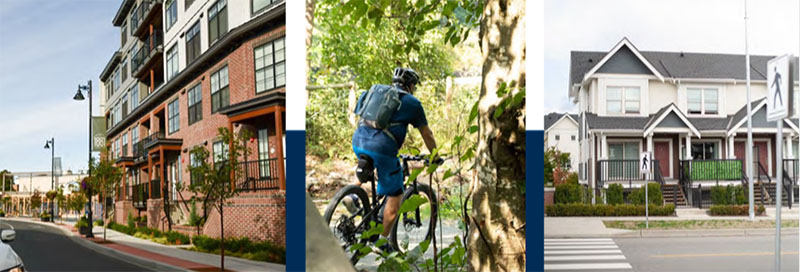Public Provides Feedback on the Regional Growth Strategy
March 28, 2022
The results of an online public engagement for phase 2 of the Regional Growth Strategy (RGS) update were recently presented to the Fraser Valley Regional District (FVRD) Board.
About 400 residents, workers, business owners, and visitors to the Fraser Valley shared their thoughts through a survey, discussion forum and storytelling feature from August 3 to October 8, 2021.
What we heard from the public will inform an update to Fraser Valley Future 2050, FVRD’s Regional Growth Strategy, a high-level policy plan used to help guide long-term growth in the region. The engagement results will help ensure any policies included in the update address the current and future challenges facing our region.
The Regional Growth Strategy considers a wide range of interconnected topics including transit, housing, parks, natural areas, economic development, and environmental issues - all from a regional perspective.
Besides the public engagement, FVRD staff continue to engage with Indigenous governments and organizations as well as local governments.

What We Heard
Respondents said they wanted affordable housing options and improved public transit in the region. They also showed a desire to maintain the region’s rural character without making compromises to the natural areas and the environment.
In summary we heard:
1. People faced challenges in securing affordable and suitable housing - whether renting, owning, buying or maintaining a home.
- Housing was especially concerning for seniors, single adults, growing families, and those with mobility limitations. Residents shared how current housing conditions affected how they lived, where they lived, and who they lived with; sometimes delaying retirement, marriage, and even having children.
2. There was significant support for investment in local and inter-regional public transit systems, especially for those with long commutes or without public transit in their community.
- Many felt that rapid transit was the only way to get people out of their cars, as it provided a superior option to driving a personal vehicle. Active modes of transportation were often preferred forms of travel; however, safety concerns often prohibited residents from getting around on foot or by cycling. There was also considerable interest in electric vehicles; however, cost was still a significant barrier.
3. There was good overall sentiments on the topics of economic development and employment in the FVRD.
- However, it may be easier for individuals to find suitable work than businesses to find suitable employees in the region. Many people shared the perspective that businesses in the region would continue to adapt to new technology and future changes. Many were thrilled to be able to work remotely, while others were feeling the effects of staffing shortages, especially those working in health care.
4. People appreciated the close proximity of natural areas in the region.
- This likely contributed to the high importance residents placed on environmental protection, especially in relation to waterways, forests, wildlife and fish habitats.
- Respondents also demonstrated considerable awareness and concern for climate change and related events, including wildfires and last year’s heat dome. Most respondents said that these concerns had a negative impact on how they felt about the future.
To learn more about what we heard in relation to these and other topics, view the RGS Public Engagement Report and related documents at haveyoursay.fvrd.ca/RGS. Stay tuned for more updates and the release of the final updated RGS later in the year.
Do you have comments, feedback, or ideas related to the draft RGS? We would love to hear from you. Please send us an email at stratplan@fvrd.ca.

